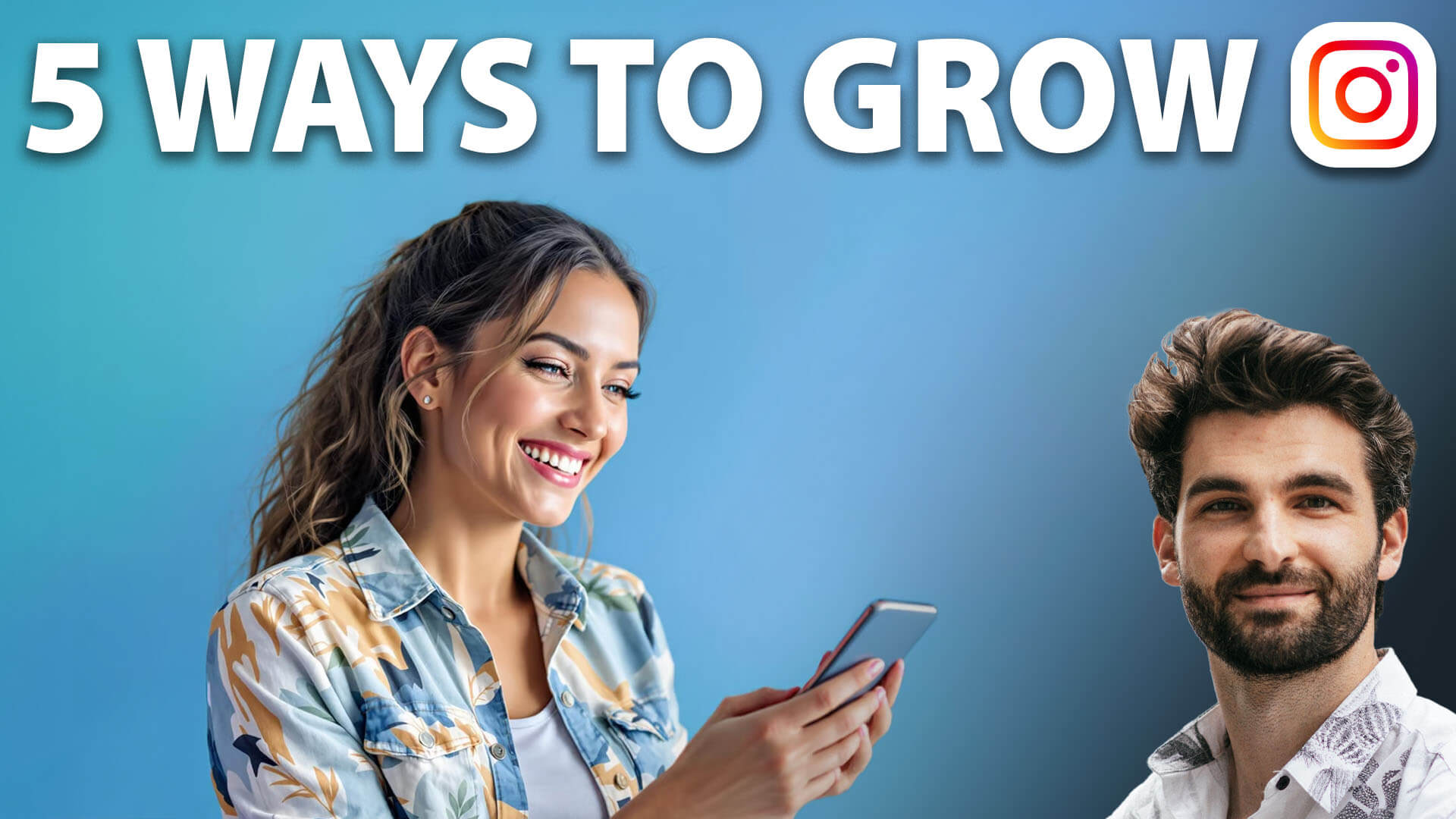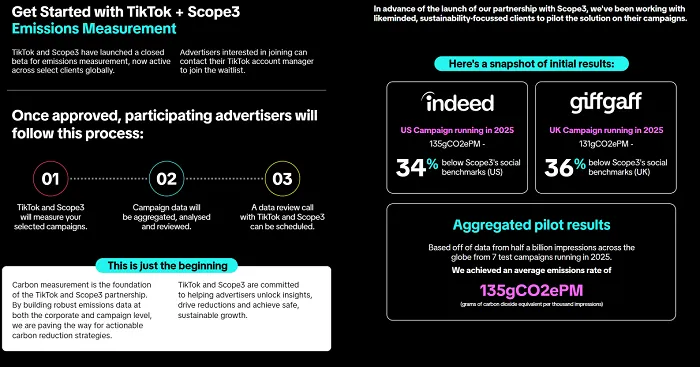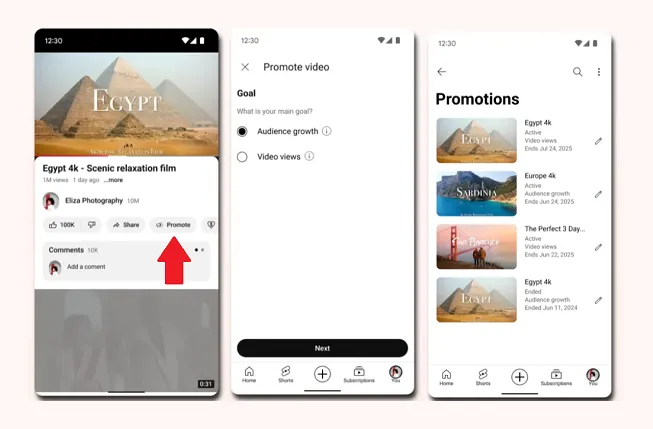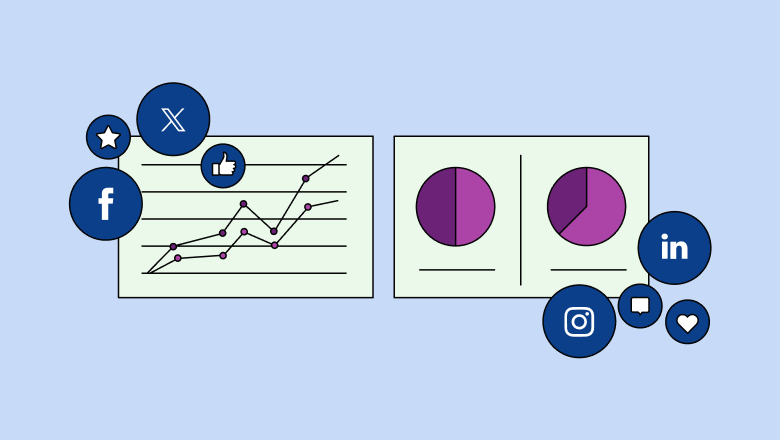The state of inclusive marketing in 2025 [new data + expert insight]
Welcome to Breaking the Blueprint — a blog series that dives into the unique business challenges and opportunities of underrepresented business owners and entrepreneurs. Learn how they’ve grown or scaled their businesses, explored entrepreneurial ventures within their companies, or created side hustles, and how their stories can inspire and inform your own success.
![The state of inclusive marketing in 2025 [new data + expert insight]](https://www.hubspot.com/hubfs/inclusive-marketing-report.webp)
Welcome to Breaking the Blueprint — a blog series that dives into the unique business challenges and opportunities of underrepresented business owners and entrepreneurs. Learn how they’ve grown or scaled their businesses, explored entrepreneurial ventures within their companies, or created side hustles, and how their stories can inspire and inform your own success.
The Unstereotype Alliance studied 300+ global brands and found that those who create inclusive advertisements brought in 5% higher short-term sales and 16% higher long-term sales, as well as a 62% higher likelihood of a brand being a customer's first choice.
The study results tell me that inclusive marketing resonates with consumers. It shows them that marketers understand their needs, how to meet them and care about their experiences. It's also clearly good for business.
Despite this, inclusive marketing isn't a commonplace practice. So, for this piece, I surveyed 100+ marketing and advertising professionals about whether they practice inclusive marketing and how they implement it and got tips from inclusivity experts on how businesses can create an effective inclusive marketing strategy.
Table of Contents
- State of Inclusive Marketing in 2025
- How Companies Are Practicing Inclusive Marketing
- Challenges and Barriers of Inclusive Marketing
- Inclusive Marketing Best Practices [Expert Tips]
- The Future of Inclusive Marketing
What inspired me to conduct this research?
Inclusive marketing recognizes consumers' different identities (like race or disability status) and lived experiences and serves and represents those differences in marketing content.
I think it's important because of the goal of marketing: attract an audience to what you offer and convince them to make a purchase. You want people of different backgrounds to come across your content and say, "This brand sees me for who I am, and I understand how it will meet my specific needs." If people can't find that connection, they'll move to a brand that does.
Consumers themselves say this: diversity and inclusion (or lack of it) influence their purchasing decisions.
Demand is clearly there, but as I mentioned above, not all brands are making space for inclusivity in their marketing strategies, and I wanted to know why. I was also curious how those investing in it are practicing it to get a sense of where there might be space for improvement.
So, I surveyed marketers, asked them exactly that, and compiled the results into this inclusive marketing report.
My colleague Jeanie Thompson, associate marketing manager, had conversations with two inclusive marketing experts, Danisha Lomax, executive VP of client inclusivity & impact at Digitas, and Nandi Howard, associate marketing manager (brand equity) at Ulta Beauty, to get their takes on the survey results and advice on how brands can implement inclusive marketing meaningfully and intentionally.
State of Inclusive Marketing in 2025
I’ll start by exploring the current state of inclusive marketing, including how businesses practice it and find success.
63% of marketers told me their primary place of employment invests in inclusive marketing. 37% say there isn’t investment or they’re unsure if there is.

I was curious about the extent to which inclusivity is embedded into the strategies of those who use it, and a majority said that there are “some” inclusive elements. Just 42% say inclusivity is central to their marketing and communications.

To dive deeper into current inclusive marketing trends, I recommend reading this piece by Sonia Thompson, an inclusive marketing expert, strategist, and consultant.
How do marketers feel about inclusive marketing?
Regardless of company stance, marketers as individuals overwhelmingly find inclusive marketing to be essential:
- 8 in 10 agree that it’s important for diverse communities to be visible in advertisements,
- More than two-thirds think more positively of and are more likely to purchase from companies that include underrepresented groups in their marketing.
For every marketer who thinks current diversity efforts are adequate, ten believe the advertising/marketing industry can still do more to support diverse and underrepresented communities.
I think this belief among marketers is important: even if there isn’t full buy-in where they work, there are still people in the room who can speak up about its importance.
Goals, Benefits, & Impact of Inclusive Marketing
Marketers whose companies invest in inclusive marketing say their top goal is appealing to a broader audience/expanding their audience. They also want to create content that existing audience groups resonate with, which makes sense: you want your audience satisfied, and they’re more likely to be satisfied by relatable content.
When it comes to who benefits from inclusive marketing, respondents say that everyone, not just companies that practice it or consumers within underrepresented groups, benefits. Only 6% think that inclusive marketing only benefits the select group of people it’s for.
I asked respondents to give examples of how their companies have benefited from inclusive marketing, and picked some of the most common themes:
- Increased customer loyalty because consumers build connections with brands that value them: “We have seen higher retention in new customer base and an increase in positive feedback from sales reps that deal directly with consumers.
- Increased revenue because inclusive marketing speaks to a broader audience segment: “[Inclusive marketing] allows us to get more sales from everyone because more people feel like our brand reaches them too.”
- Consumers nowadays value inclusivity more than ever, so brands that do it authentically benefit from “enhanced image and reputation.”
- Consumers are more likely to interact with content and brands they connect with, which brings “increased customer involvement.”
Are marketers finding success with inclusive marketing?
Despite high investments, most respondents describe their inclusive marketing efforts as somewhat successful (61%).
As I mentioned above, my teammate Jeanie Thompson spoke to two inclusive marketing experts (Danisha Lomax and Nandi Howard) to get their thoughts on the data.
She asked Lomax what might distinguish brands that succeed with inclusive marketing from those that don’t. She theorizes that it’s because they’re using the same metrics to grade inclusive vs. non-inclusive efforts, when the measurement process should be different: “What makes a campaign successful is hearing back from the community; hearing them say, ‘Yes, you did this right,’... or ‘I love the way you told a super intersectional story that more people need to see,’ so I think those things — the intangibles — are and should be part of the success.”

This makes sense to me: she’s not saying that KPIs like CTR and sales don’t matter, just that other factors might give a more comprehensive picture of how your inclusive campaigns make your diverse audience groups feel.
“Brands will always want to see moving products and sales — that’s what we are trained to do. So, I think we need to start thinking about the kind of intangibles around doing inclusive marketing and how that future-proofs a brand to be remembered, to be in the psyche of people,” Lomax adds.
Does inclusive marketing impact business success?
I’m not surprised that most respondents say inclusive marketing only has a medium impact on overall business success.
I dive deeper into strategy later on, but most companies invest in inclusivity in a piecemeal fashion (like one-time cultural awareness campaigns), which are less likely to draw in the numbers that regular campaigns get. Basically, fewer inclusive marketing campaigns, less impact on business success.

Howard says the brands that get a positive business impact are consistent: “It’s the brands that show they’re inclusive year-round versus during a key DE&I movement. When you see brands that weave inclusivity into the DNA of everything they do, it will always show up more authentically.”
How Companies Are Practicing Inclusive Marketing
Now we know that companies are investing in inclusive marketing, but how exactly is it implemented?
Primarily visually, through inclusive images that portray multicultural representation. This is followed by accessible web design (like alt text for images), inclusive language, and awareness month campaigns (like Black History Month).

Incorporating inclusivity in a fragmented fashion (using inclusive imagery vs. an overall inclusive strategy) and focusing on calendar-based events tells me that businesses primarily hit surface-level representation over an always-on strategy.
The implementation pattern is what Lomax calls a “checkbox approach” to inclusivity: “Image diversity is great, but I often see that it’s used in a bit of a checkbox way so people won’t get called out. But what is the storytelling that surrounds the imagery? I think that’s where brands need to be looking…How can I tell a story that includes [diverse groups] but also includes me as a brand solving a problem that they have a need for.”

I think the disconnect is that businesses might not know how inclusivity fits into general marketing campaigns. Here’s what I mean: it’s easy to understand what is involved in a Pride Month campaign. The imagery and messaging to use are pretty clear. However, if you’re used to marketing for cultural moments like that, I can see why it would be hard to figure out how your typical approach to inclusive marketing applies to every campaign you run.
Language inclusivity being less common tells me that messaging might not always align with the visuals marketers create. Take KFC, for example. In 2023, it ran a campaign that played off of its “Finger lickin’ good” slogan (pictured below).

“Sorry utensils, it’s finger lickin’ good” is a perfectly mundane copywriting, but the campaign drew near immediate backlash online because of the imagery. Billboards featured Black people eating KFC, but in a way that (likely unintentionally, but intent still matters) played into a racist stereotype that dates back to the early 1900s about Black people loving fried chicken.
The stereotype was often featured in caricatured advertisements (one is pictured below) and minstrel shows, where White actors would paint their faces Black and exaggeratedly eat fried chicken to push the idea that Black people were uncivilized.
In KFC’s case, imagery didn’t align with messaging, which was simply that KFC is so good that people can’t help but lick their fingers after it’s gone, not a reinforcement of the stereotype.
Challenges and Barriers of Inclusive Marketing
Marketers whose primary place of employment doesn’t practice inclusive marketing are unsure what’s stopping them from implementing it. A limited budget is the #2 reason for not investing, followed by a lack of knowledge/expertise about implementing it.

Regarding budget constraints, Howard says there’s another side to that coin: inclusive marketing brings in money. She says, “DE&I will always drive dollars…the more diverse your marketing is to different demographics, the higher the chance you’re going to bring in more money.” Why? You’re appealing to multiple demographics.

Challenges at Companies That Invest
Marketers working at companies that invest in inclusive marketing say budget limitations are the number one challenge. 33% struggle to ensure content appears in brand-safe environments, and 28% worry about resistance and blowback from customers and the general public.

Lomax says that she’s dealt with budget constraints, but it shouldn’t be a bookend to practicing inclusive marketing or not: “Budget pulls and cuts happen all the time in our industry…While you may have to pull budget back to ensure that you’re meeting your sales goals numbers, it doesn’t mean that you necessarily have to pull budget back from those particular campaigns and communities. I would challenge brands to think about other long-term ways to preserve those marketing dollars.”
An example that comes to mind for preserving marketing dollars is a simple change of focus with influencer marketing. If your budget is lacking but you already invest in influencers, update your strategy to ensure you team up with influencers from various communities. They’ll share content with their followers (who likely share the same interests and experiences), exposing them to your brand and vouching for your offer as something that serves people like them.
If you’re worried about blowback or resistance, Lomax also has some thoughts (and a CTA): “I think [fear of backlash] is a bit of a cop-out. I think what people are saying these days, directly to brands, is that they want to know where [brands] sit in the inclusive space. I think if people are asking for that, then it is on the brand to show and tell.”

“There are so many experts…so many communities who are saying ‘This is what we want in order to spend our dollars with you,’ and so I think that if brands are letting fear get in the way…that is a little lazy,” she adds.
Inclusive Marketing Best Practices [Expert Tips]
So far, we’ve learned that brands recognize the importance of inclusivity in marketing. Still, it’s adopted in fragmented ways with more visual representation instead of full-on inclusivity in every aspect of marketing.
Marketers, even those whose primary place of employment doesn’t practice inclusive marketing, agree that businesses can do more to support diverse/underrepresented communities in their marketing and advertising.
That said, how can companies do that? Let’s dive into what Howard and Lomax recommend.
1. Leverage insights into your community.
“I think people sometimes give themselves more credit in knowing [a] certain community and don’t realize how often they’re leaning on biases or stereotypes when trying to market to diverse demographics,” says Howard.
Her recommendation? Talk to your consumer insights team (or whoever monitors marketing data): “Pull the numbers and see what actually performs well [with the community you’re trying to reach]...We work in lock-step with our consumer insights team whenever we do anything diversity-related because you need their insights to inform your strategy.”

I like this tip because data will tell you exactly what resonates with the communities you want to reach and represent. As I mentioned, going beyond marketing for cultural moments (like Women’s History Month) is essential, so digging into data gives you insights to inform your campaigns.
Howard shared an anecdote of what this looks like in practice for her: “We’ll look at consumer behaviors, like how [customers] like to shop in the retail industry…When I was studying LGBTQ+ consumers, there [is] a lot around found family. So, if you’re positioning something for them [but] use the stereotypical type of family, how can you make that experience feel familiar to them?”
Other strategies I recommend include:
- Analyzing performance data segmented by audience demographic,
- Organizing focus groups with diverse segments,
- Using social listening to understand community concerns and preferences,
- Testing campaigns with representative audience members before launch.
2. Build inclusive marketing teams (and don’t do it “just because”).
A great way to ensure strategies are (and stay) inclusive? Have people in the room with different perspectives and lived experiences to draw from. A diverse team can also provide insight if they find something insensitive.
However, it is important to be mindful of tokenization. If you’re responsible for hiring and building a team, including someone in conversations just because they’re of a specific identity can make them feel like their identities are being taken advantage of to ensure diversity in the room.
“Long story short, it’s not enough to just bring people in…it’s great for [underrepresented groups] to be in the room, but if you’re not hearing or not open to these different perspectives, then it’s a waste of space, in my opinion,” says Howard.

To me, this means making sure everyone in the room has a chance to speak and is genuinely listened to when they do. If someone says an idea feels offensive, it should be a welcomed perspective discussed among the team.
Consumers themselves even believe that internal structural changes can contribute to overall genuine inclusivity: a majority reported that the best way for brands to demonstrate authenticity during Black History Month is by addressing diversity & inclusion within their companies.
Strategies I recommend include:
- Ensuring diverse representation at all levels of marketing teams,
- Creating safe spaces for honest feedback on campaign concepts,
- Inclusive marketing training for all team members.
3. Establish clear frameworks.
11% of respondents didn’t know if their company invests in inclusive marketing, and 49% say inclusivity is only partially implemented. An opportunity for improvement here lies in creating clear frameworks and training for teams (think internal workshops or content guidelines) on authentically incorporating inclusivity throughout all stages of the marketing process.
Clear frameworks can include:
- Written guidelines for inclusive marketing implementation,
- Checklists for campaign development and review,
- Regular training on inclusive marketing principles,
- Explicit processes for raising and addressing concerns.
Howard says there’s no shame in getting external help: “I think if you’re working for a company that doesn’t have the capacity or the skill set, find an external agency…there are agencies out there that specialize in things like that.”
In other words, if you want to do inclusive marketing right but don’t know where to start, begin by outsourcing folks who can guide you into making the right decisions.
4. Embed inclusivity into year-round marketing campaigns.
With 26% of respondents running multicultural campaigns but 36% participating in awareness months, brands risk appearing opportunistic if their efforts to be inclusive are only calendar-based (like Pride Month).
Instead, I recommend finding ways to embed inclusivity into year-round marketing campaigns. Feature diverse voices in content, integrate cultural perspectives, and ensure inclusivity isn’t just a temporary theme.
Lomax says, “Systematizing the way inclusion shows up in every part of your business and every part of your capabilities, from research all the way to measurement, is how you make [inclusive practices] consistent.”

She says that when this happens, inclusivity becomes part of the team's regular thought processes and “Part of how they do the work they know they need to be doing…it’s not easy, but it’s how you make it a best practice.”
5. Use inclusivity as a differentiator, not a quota.
Many companies are incorporating inclusivity in a checkbox fashion and following broad trends.
For example, inclusive imagery is the most popular investment in inclusive marketing. However, just 36% incorporate inclusive language, which I think poses a potential gap for audiences: they see themselves represented visually, but the messaging might not speak to them in the same way.
The opportunity here lies in using inclusivity as a differentiator that truly sets you apart and speaks to more people. For example, you can refine your brand voice to ensure language is welcoming, gender-neutral, and culturally respectful. This can be a major differentiator if you’re doing this, but direct competitors aren’t.
You can also track and report on inclusivity efforts to leadership, publish insights, create transparency reports, and demonstrate a genuine commitment beyond aesthetics.
Key alignment strategies include:
- Developing inclusive language guidelines to complement visual representation,
- Ensuring messaging speaks authentically to diverse experiences,
- Considering historical and cultural context when combining imagery and copy,
- Reviewing campaigns holistically to identify potential disconnects.
6. Don’t forget to center the communities you’re trying to reach.
“The first thing I think about when I think about more authentic, inclusive marketing is, how can a brand that hasn’t yet made direct connections with a community make those connections?” says Lomax. “Ultimately, I think authenticity starts with [asking one question]: are you listening to what the community’s needs are and do you have a solution that can help them?”
If you want your efforts to resonate, the communities you want to reach must be central to any actions you take. It's hard to create content that truly speaks to them without sincerely understanding who they are and what is important to them.
Buyer persona research is a tried and true way to learn more about your customer, and Howard recommends talking to the communities you want to attract.
“Talk to that community. I think brands feel so much of an onus when it comes to building out a strategy…But I don’t think we have to come up with answers. Sometimes, you can just ask that community, ‘what do you want?’” says Howard. “Go online. People will tell you what they want, especially in this current market, which I love.”

Implementation strategies include:
- Building ongoing relationships with diverse communities,
- Creating feedback channels for customers to share their thoughts,
- Addressing community concerns promptly if issues arise.
The Future of Inclusive Marketing
Nearly 90% of marketers think accessibility and inclusivity will be very important in shaping the future of marketing. Regardless of adoption rates, more than 90% of respondents believe digital inclusion is important.

Most marketers also say that they’ve noticed a shift in consumer demand for inclusive marketing, and I have faith that this shift will lead to increased adoption of inclusive marketing in the future.
If you’re a brand looking to increase its efforts, the expert-backed tips I included are a great place to start.
“I want [marketers] to take a very human approach to understanding people and making sure that the values that a brand has match the values that a community is saying they want. If you do that every day, you won’t have to worry about just showing up at Pride and rainbow-washing,” says Lomax.
I fully agree with her: companies that go beyond surface-level inclusivity and truly embed it into their marketing DNA will stand out from the crowd, and diverse communities can come to recognize you as a brand that acknowledges their experiences and meets their needs.
The most significant opportunity with inclusive marketing is making inclusivity a strategic advantage, rather than just a branding move. You draw on a broader audience base, build deeper connections, and inspire loyalty.
So what will you do? And how will you make your inclusive marketing count going forward?


















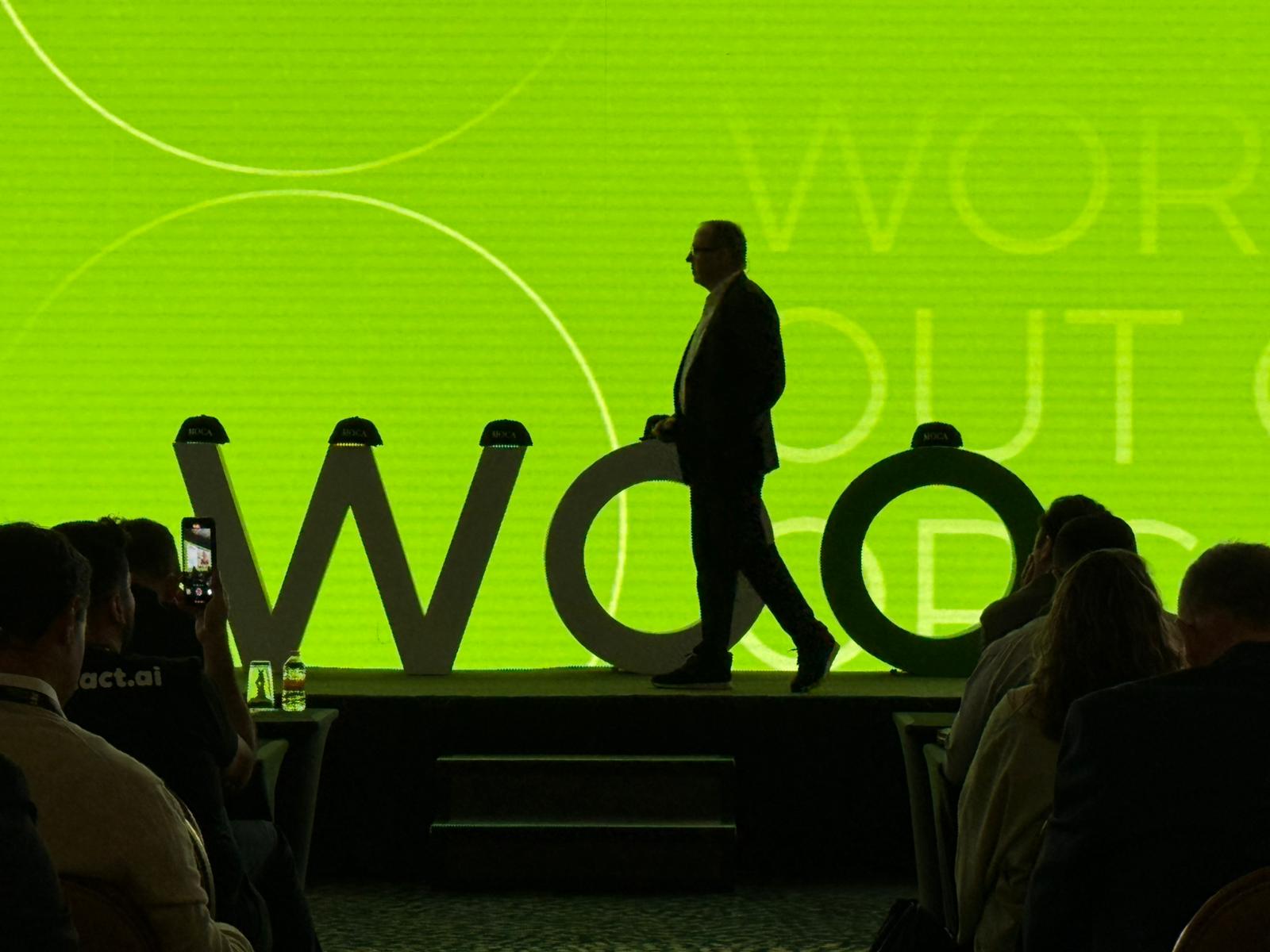




![Brand and SEO Sitting on a Tree: K-I-S-S-I-N-G [Mozcon 2025 Speaker Series]](https://moz.com/images/blog/banners/Mozcon2025_SpeakerBlogHeader_1180x400_LidiaInfante_London.png?auto=compress,format&fit=crop&dm=1749465874&s=56275e60eb1f4363767c42d318c4ef4a#)

![How To Launch, Grow, and Scale a Community That Supports Your Brand [MozCon 2025 Speaker Series]](https://moz.com/images/blog/banners/Mozcon2025_SpeakerBlogHeader_1180x400_Areej-abuali_London.png?auto=compress,format&fit=crop&dm=1747732165&s=beb7825c980a8c74f9a756ec91c8d68b#)
![Clicks Don’t Pay the Bills: Use This Audit Framework To Prove Content Revenue [Mozcon 2025 Speaker Series]](https://moz.com/images/blog/banners/Mozcon2025_SpeakerBlogHeader_1180x400_Hellen_London.png?auto=compress,format&fit=crop&dm=1747758249&s=9f3c5b1b7421f862beace1cb513053bb#)

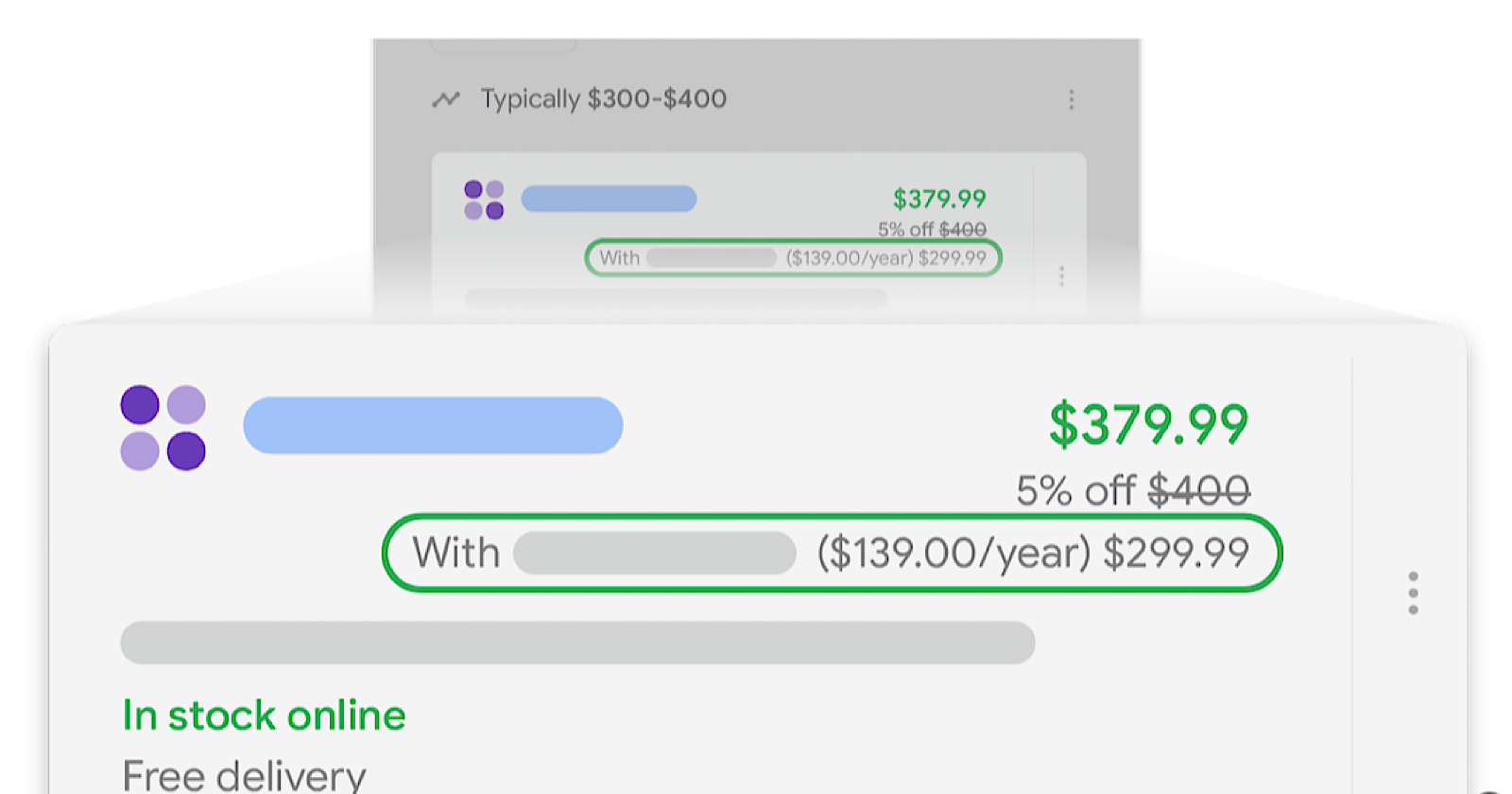






















![The 11 Best Landing Page Builder Software Tools [2025]](https://www.growthmarketingpro.com/wp-content/uploads/2024/04/best-landing-page-software-hero-image-1024x618.png?#)





































![The Most Searched Things on Google [2025]](https://static.semrush.com/blog/uploads/media/f9/fa/f9fa0de3ace8fc5a4de79a35768e1c81/most-searched-keywords-google-sm.png)
![What Is a Landing Page? [+ Case Study & Tips]](https://static.semrush.com/blog/uploads/media/db/78/db785127bf273b61d1f4e52c95e42a49/what-is-a-landing-page-sm.png)














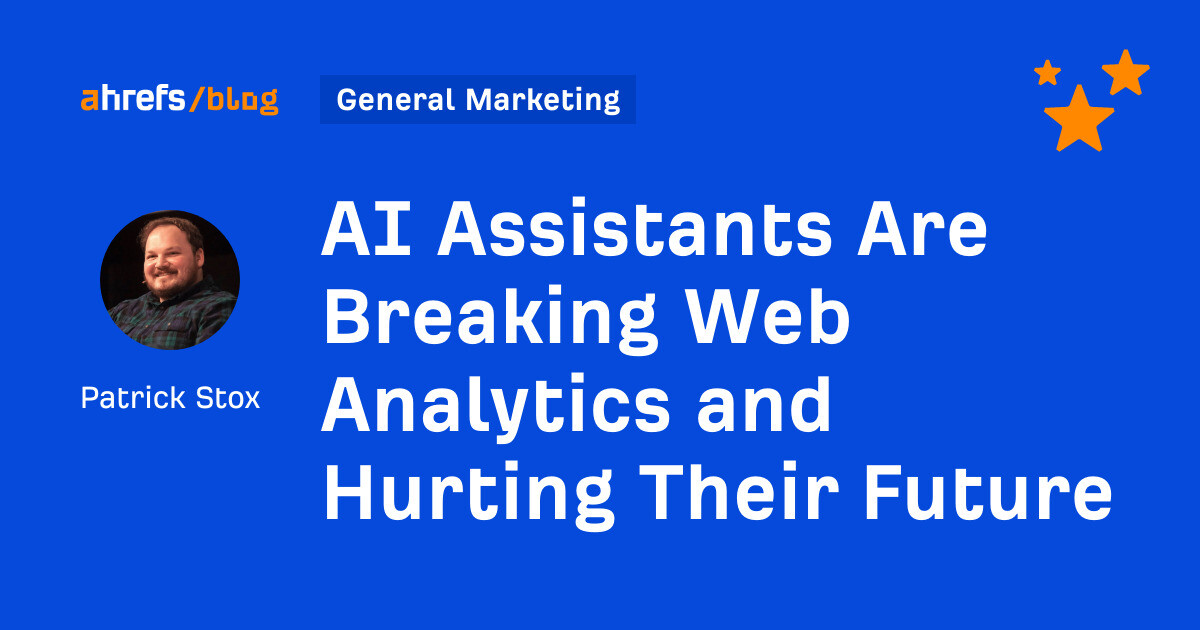
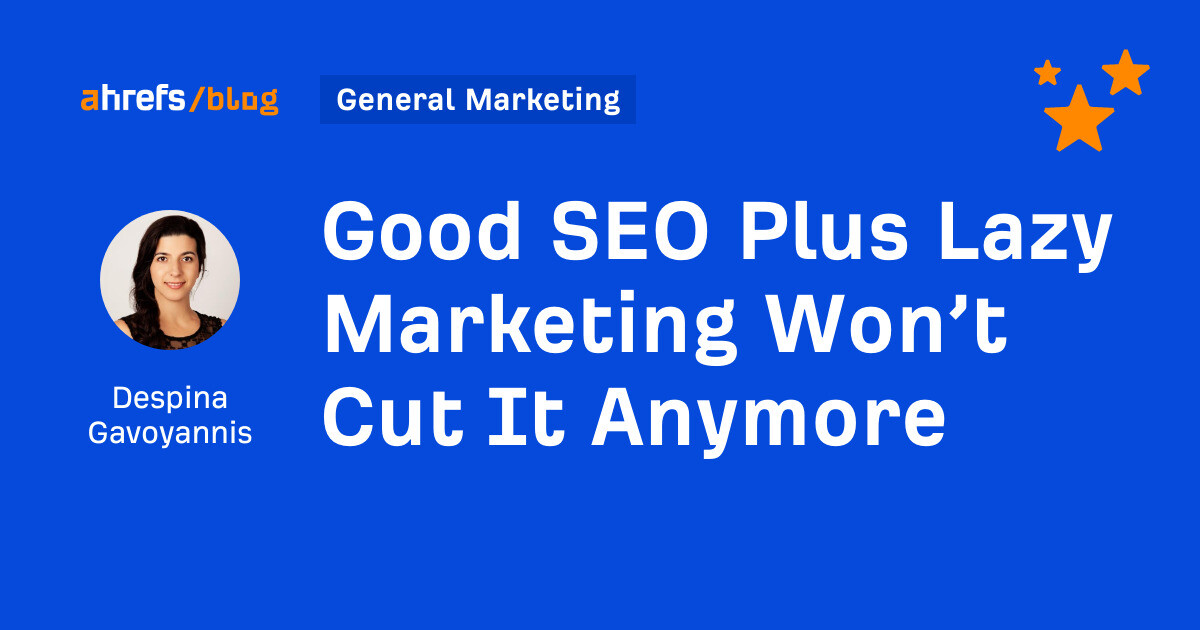



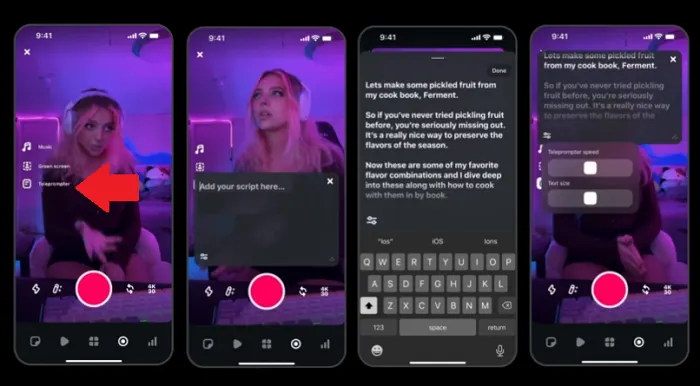
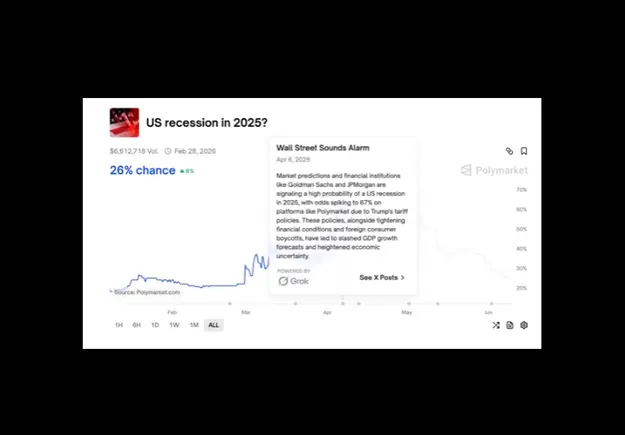










![Social media image sizes for all networks [June 2025]](https://blog.hootsuite.com/wp-content/uploads/2023/01/Social-Media-Image-Sizes-2023.png)

![AI can boost conversions from your web page — HubSpot’s CMO shows you how [tutorial]](https://knowledge.hubspot.com/hubfs/ai-1-20250605-395473.webp)







